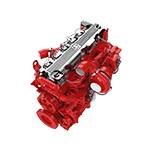Nov . 20, 2024 18:38 Back to list
brake drum gear coupling
Brake Drum Gear Coupling An Overview
In the realm of mechanical engineering and industrial applications, the efficiency and reliability of power transmission systems are paramount. One of the critical components in these systems is the coupling, which connects two shafts to transmit power while allowing for relative movement. Among various coupling types, the brake drum gear coupling stands out for its unique design and functionality.
What is a Brake Drum Gear Coupling?
A brake drum gear coupling is a device that genuinely merges two engineering concepts—the brake drum and gear coupling—into one effective solution. Typically, gear couplings consist of two hubs, each attached to a shaft, and connected by gear teeth that mesh together. The inclusion of a brake drum allows for additional braking functionality, enabling the system to slow down or stop motion when required.
This type of coupling is commonly found in applications where torque transmission is critical, like in heavy machinery, conveyor systems, and lifting equipment. The ability to manage rotational forces efficiently while also integrating braking provides a unique advantage in various industrial settings.
Key Components and Functionality
The primary components of a brake drum gear coupling include
1. Gear Hubs The projective parts of the coupling that mesh with each other. The gear teeth ensure a secure fit, transmitting torque effectively under varying loads. 2. Brake Drum Mounted on one of the hubs, the brake drum serves as the friction surface where brake shoes can make contact. This feature enables controlled stopping or slowing of the equipment using hydraulic or mechanical brakes.
3. Bearing and Shaft These components support the coupling and ensure smooth rotation, reducing wear and tear over time.
4. Clamping Mechanism This secures the coupling to the shafts, allowing for easy installation and removal when maintenance is necessary.
Advantages of Brake Drum Gear Couplings
The brake drum gear coupling delivers several benefits
- Torque Transmission The robust design allows for significant torque to be transmitted between shafts, which is critical in heavy-duty applications.
brake drum gear coupling

- Braking Functionality The integration of a brake drum enables immediate and controlled deceleration of machinery, enhancing safety in operations.
- Durability and Reliability Constructed of strong materials, these couplings are built to withstand harsh environments and high loads, resulting in a longer lifespan and reduced maintenance costs.
- Flexibility The design can accommodate misalignment between shafts, reducing stress on connected components and ensuring smooth operation.
Application Areas
Brake drum gear couplings find extensive use across various industries, including
- Mining For heavy machinery that requires reliable power transmission and braking systems.
- Construction In cranes and hoists where controlled lifting and lowering are essential.
- Manufacturing In conveyor systems where operational efficiency and safety are critical.
- Material Handling Used in systems where controlled movement of bulk materials is necessary.
Conclusion
As industries evolve and demand for more efficient, reliable machinery increases, the importance of advanced coupling systems like the brake drum gear coupling cannot be overstated. By combining the strengths of gear couplings with efficient braking systems, this innovative coupling type meets the rigorous demands of modern industrial applications. The adoption of brake drum gear couplings contributes significantly to the safety, efficiency, and longevity of heavy machinery, making it an invaluable component in today's mechanical landscape. As technology continues to advance, we can expect further innovations in coupling designs, enhancing performance and functionality even more.
In conclusion, understanding the role and benefits of brake drum gear couplings is essential for engineers and mechanics alike. Their integration into various systems not only enhances operational efficiency but also contributes to safer and more reliable industrial practices.
-
Scania Brake Drums: OEM Quality for Optimal Safety & Durability
NewsAug.16,2025
-
R.V.I: Advanced Remote Visual Inspection for Precision
NewsAug.15,2025
-
Discover HYUNDA: Innovative Vehicles, Equipment & Solutions
NewsAug.14,2025
-
R.V.I: Unlock Advanced Insights & Real-time Performance
NewsAug.13,2025
-
Kamaz Brake Drum: Durable & Reliable for Heavy Duty Trucks
NewsAug.12,2025
-
Heavy Duty Iveco Brake Drum - Premium Quality & Safety
NewsAug.11,2025
